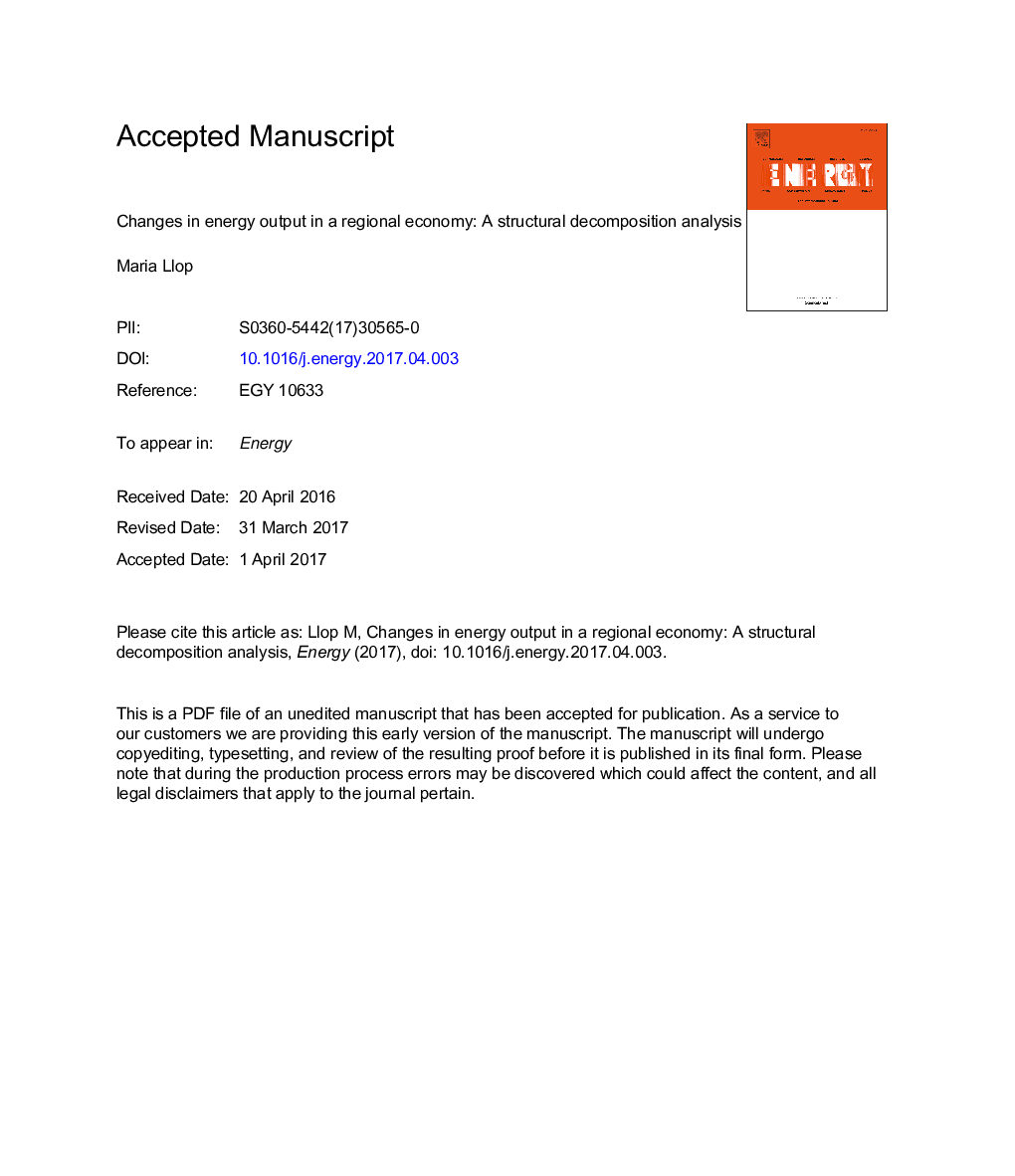| Article ID | Journal | Published Year | Pages | File Type |
|---|---|---|---|---|
| 5476016 | Energy | 2017 | 31 Pages |
Abstract
In the input-output literature, structural decomposition analysis (SDA) has largely been used to disentangle changes in key variables over time. This paper uses the demand-driven input-output model and proposes a simple method to decompose the changes in energy gross output into different determinants. Specifically, the total changes in energy output are divided into two elements: technological changes, showing the effects of changing the technological coefficients of the input-output model, and structural changes, showing the effects of changing the final demand components. In addition, technological changes are divided into production effects, capturing the impacts of modifying the intermediate purchases of sectors, the substitution effects, capturing the impacts of modifying the selling structure, and the mixed effects, capturing the impacts of changes in total intermediate relations. The empirical application, which is for the Spanish region of Catalonia, uses two input-output tables that cover an entire decade (2001 and 2011). The results show a positive contribution of technology to increasing energy output, while the contribution of the final demand for energy is negative. In addition, the various energy activities exert a different repercussion on energy gross output changes. This highlights the importance of using detailed methods in the study of energy issues.
Related Topics
Physical Sciences and Engineering
Energy
Energy (General)
Authors
Maria Llop,
